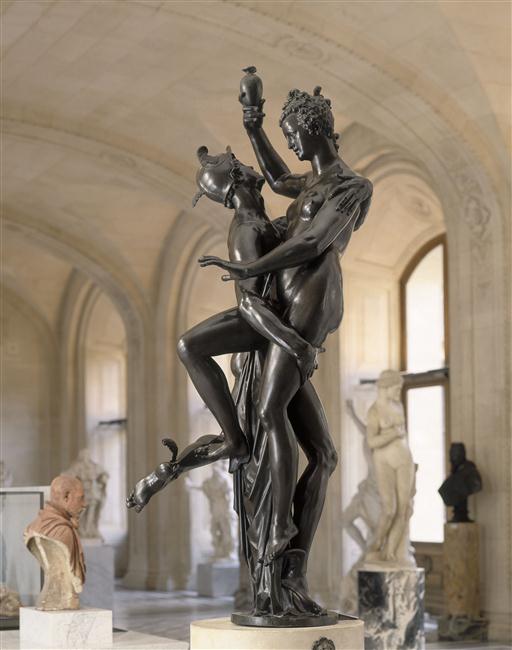
Mercury Abducting Psyche
Adriaen de Vries, 1593
Musée du Louvre, Paris
One could hardly imagine another sculpture that challenges the laws of gravity as much as Adriaen de Vries’ masterpiece, Mercury Abducting Psyche, executed for Rudolf II in 1593. The monumental sculpture, over two meters high, seems to float above the ground. As in a whirlwind, Mercury lifts the beautiful Psyche up and away to Mount Olympia, where she will finally be reunited with her beloved Cupid. The spiral shape of the work invites the viewer to walk around the sculpture and fully experience its splendor, according to the stylistic ideal of the late Renaissance. The used technique – bronze cast in cire perdue – is a tour-de-force by the artist, and it were probably these skills that made De Vries attractive to Rudolf II’s court in Prague. This Mercury was taken to Sweden as war booty after the Thirty Years’ War in 1648. A few years later it was later given by Queen Christina to the French diplomate Abel Servien, and eventually the statue ended up in the collection of the Louvre.
— Linda Hinners, Curator of Sculpture, Nationalmuseum in Stockholm, Sweden
Object details
Mercury Abducting Psyche 1593
Bronze | 215 x 92 x 72 cm | M.R. 3270
Musée du Louvre, Paris
Adriaen de Vries
The Hague 1556 – 1626 Prague
Gallery




Explore more
The Michelangelo Gallery
Article about the gallery where ‘Mercury Abducting Psyche’ is on display
Read on louvre.fr